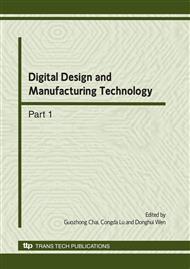p.758
p.762
p.767
p.771
p.776
p.781
p.786
p.791
p.796
Design of Holonic Manufacturing Execution System with Control Mechanism Based Stigmergy
Abstract:
To deal with problem of manufacturing system stability caused by uncertain factors in discrete production process, holon was introduced to manufacturing execution system (MES). A distributed manufacturing control architecture based on holon was established. This architecture using cooperation mechanism based stigmergy to realize agility, autonomy and intelligence of system control. Based on the architecture, holon driven agents to visit production elements, acquiring dynamic information of production process. Model design of production factors as order, resource, raw material, product and management factors as optimize, execution was described amply. Finally, workflow of this system was depicted with an example of uncertain order factor.
Info:
Periodical:
Pages:
776-780
Citation:
Online since:
March 2010
Authors:
Keywords:
Price:
Сopyright:
© 2010 Trans Tech Publications Ltd. All Rights Reserved
Share:
Citation:


